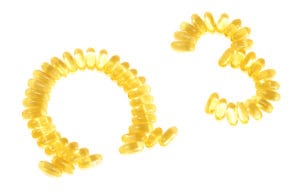Written by Taylor Woosley, Science Writer. A significant inverse relationship was shown for DHA, EPA, and DHA+EPA for both total stroke and ischemic stroke (p<0.05).
 Over the last two decades there has been an increase in absolute number of incident strokes by 70%, prevalent strokes by 85%, deaths from stroke by 43%, and disability adjusted life-years by 32%1. Stroke is the third leading cause of death in women and the fifth in men2. Hypertension, diabetes, dyslipidemia, cardiovascular disease, and an unhealthy lifestyle are all risk factors of stroke, among which hypertension is recognized as the main modifiable risk factor of stroke3.
Over the last two decades there has been an increase in absolute number of incident strokes by 70%, prevalent strokes by 85%, deaths from stroke by 43%, and disability adjusted life-years by 32%1. Stroke is the third leading cause of death in women and the fifth in men2. Hypertension, diabetes, dyslipidemia, cardiovascular disease, and an unhealthy lifestyle are all risk factors of stroke, among which hypertension is recognized as the main modifiable risk factor of stroke3.
Observational studies have demonstrated an inverse association between dietary consumption of either fatty fish or omega-3 fatty acids and incident cardiovascular events4. Omega-3 fats from fish sources include eicosapentaenoic acid (EPA), docosahexaenoic acid (DHA) and docosapentaenoic acid (DPA)5. It has been reported that these fatty acids have a positive impact on inflammation and vascular endothelial cell function6.
O’Keefe et al. conducted a pooled analyses of 29 cohort studies in the Fatty Acid and Outcome Research Consortium to analyze the association between marine omega-3 polyunsaturated fatty acid (PUFA) biomarker levels and incident stroke – total, ischemic, and hemorrhagic. Data included in the analysis featured omega-3 PUFA biomarker levels from 183,291 individuals, with a median follow-up time of 14 years (range, 5-30 years). In total, 10,561 subjects were recorded as incident stroke cases: 78% ischemic, 11% hemorrhagic, and 11% unspecified. At baseline, the mean age of participants was 65 years, with 53% of them being women, and 82% being White adults.
Two models were used to analyze total stroke in relation to each PUFA exposure – those with and without preexisting cardiovascular disease (CVD). In the pooled data results, the estimated 10th, 50th, and 90th percentiles for red blood cell (RBC) EPA + DHA content was 3.4%, 5.2%, and 7.9%, respectively. Significant findings of the pooled analyses of 29 cohort studies are as follows:
- For DHA, a significant inverse association was observed for total stroke, with the risk in Q4 and Q5 being 12% to 13% lower than the reference group, when analyzing by quintile. Furthermore, similar patterns were noted for EPA and EPA+DHA in analyses with the risk in Q5 being 17% lower than in Q1.
- Similarly, patterns for ischemic stroke were comparable to those of total stroke, with risk in Q5 being 14% to 18% lower than Q1.
- Results for hemorrhagic stroke showed little to no evidence of differential risk for any PUFAs tested.
- Subgroup analyses findings of PUFA by age (<65 versus >65), sex (male versus female), and prevalent atrial fibrillation (yes versus no) showed no significant effect modification for omega-3 PUFA biomarker relationships with total stroke (Bonferroni-corrected alpha=0.004).
Results of the analysis of 183,291 participants from 29 prospective studies show that omega-3 (DHA, EPA, and EPA+DHA) levels were inversely associated with both total and ischemic stroke risk. Findings were more significant when excluding subjects with preexisting CVD. Study limitations include lack of diverse subjects and only testing omega-3 PUFA levels and covariates at baseline.
Source: O’Keefe, James H., Nathan L. Tintle, William S. Harris, Evan L. O’Keefe, Aleix Sala-Vila, John Attia, G. Manohar Garg et al. “Omega-3 Blood Levels and Stroke Risk: A Pooled and Harmonized Analysis of 183 291 Participants From 29 Prospective Studies.” Stroke 55, no. 1 (2024): 50-58.
© 2023 American Heart Association, Inc.
Click here to read the full text study.
Posted March 27, 2024.
Taylor Woosley studied biology at Purdue University before becoming a 2016 graduate of Columbia College Chicago with a major in Writing. She currently resides in Glen Ellyn, IL.
References:
- Potter TBH, Tannous J, Vahidy FS. A Contemporary Review of Epidemiology, Risk Factors, Etiology, and Outcomes of Premature Stroke. Curr Atheroscler Rep. Dec 2022;24(12):939-948. doi:10.1007/s11883-022-01067-x
- Manwani B, Finger C, Lisabeth L. Strategies for Maintaining Brain Health: The Role of Stroke Risk Factors Unique to Elderly Women. Stroke. Aug 2022;53(8):2662-2672. doi:10.1161/strokeaha.121.036894
- Li AL, Ji Y, Zhu S, et al. Risk probability and influencing factors of stroke in followed-up hypertension patients. BMC Cardiovasc Disord. Jul 24 2022;22(1):328. doi:10.1186/s12872-022-02780-w
- Nicholls SJ, Lincoff AM, Garcia M, et al. Effect of High-Dose Omega-3 Fatty Acids vs Corn Oil on Major Adverse Cardiovascular Events in Patients at High Cardiovascular Risk: The STRENGTH Randomized Clinical Trial. Jama. Dec 8 2020;324(22):2268-2280. doi:10.1001/jama.2020.22258
- Abdelhamid AS, Brown TJ, Brainard JS, et al. Omega-3 fatty acids for the primary and secondary prevention of cardiovascular disease. Cochrane Database Syst Rev. Feb 29 2020;3(3):Cd003177. doi:10.1002/14651858.CD003177.pub5
- Bae JH, Lim H, Lim S. The Potential Cardiometabolic Effects of Long-Chain ω-3 Polyunsaturated Fatty Acids: Recent Updates and Controversies. Advances in nutrition (Bethesda, Md). Jul 2023;14(4):612-628. doi:10.1016/j.advnut.2023.03.014
